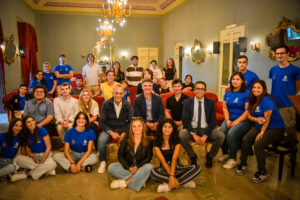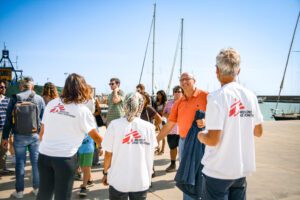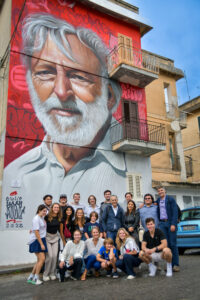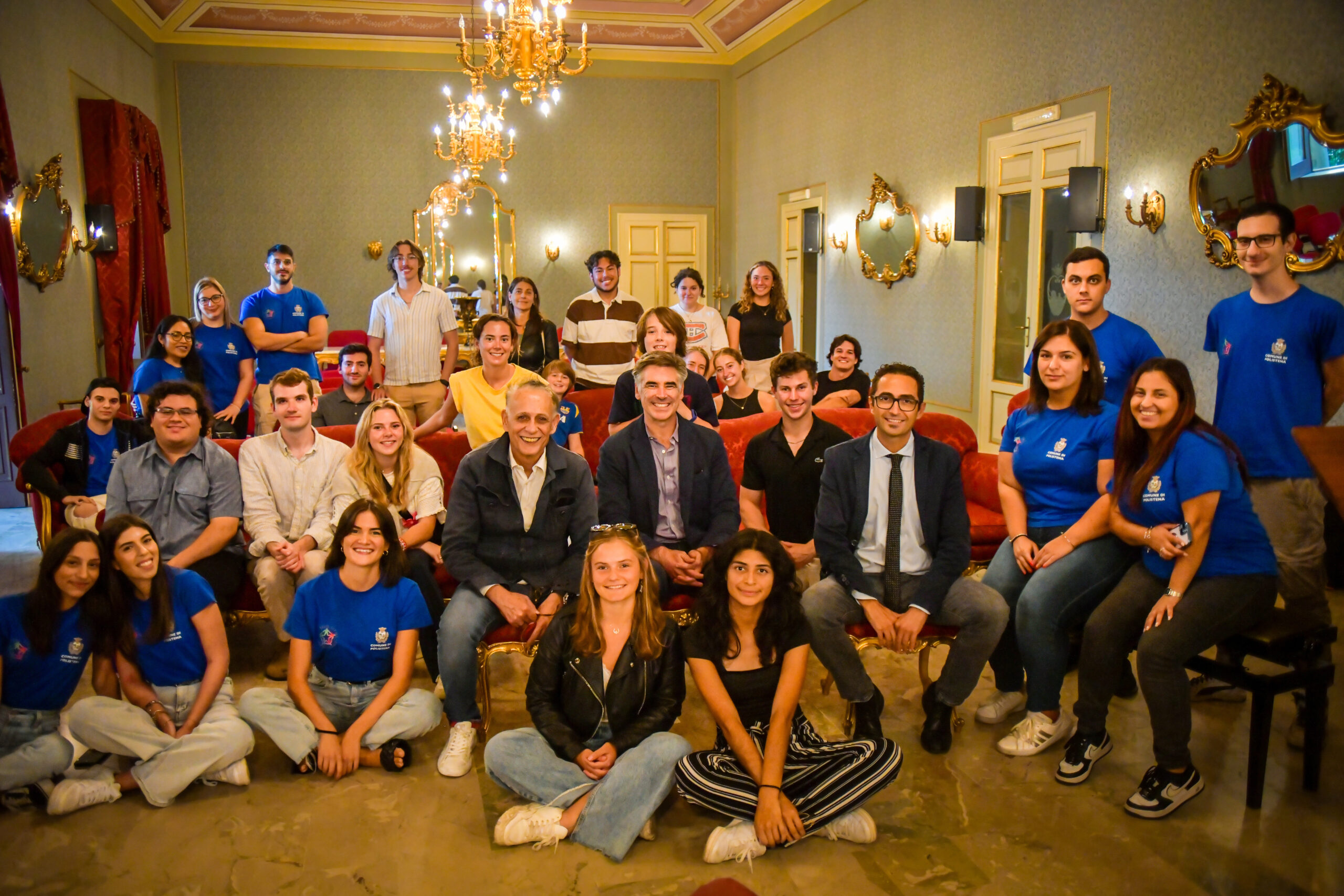As part of our Human Rights Lab programming, the Borromini Institute organized a week-long trip for our University of Illinois and Hobart and William Smith College students into Italy’s deep south. We began in the Calabria region, headed into the island of Sicily, and concluded with an overnight ferry into the bustling city of Naples. These historic destinations welcomed us with open arms, which proved to be a guiding theme that resonated throughout the entire trip. Not only do these locations offer unparalleled beauty and rich cultural heritage, so too they have much to teach us about the role of the Mediterranean basin as a unique site of cultural connectivity, hybridity, and integration.
And so it is with immense gratitude that we would like to thank: Michele Tripodi, the mayor of Polistena who engaged with our students in a difficult but needed discussion of the town’s initiatives to improve the living and working conditions of immigrants in their agricultural workforce; Vittorio Zito, the mayor of Roccella Ionica, who met with us in the local port to discuss the town’s role as a ‘prima accoglienza’ or entry point for migrants arriving overseas; Rosario Zurzolo who not only offered us an incredible sampling of Syrian specialties at the Social Cooperative Jungi Mundu in Camini, but also walked us through how the cooperative finds work placements for disadvantaged groups to redevelop the local territory.






After several days of tough but needed discussions and meetings tied to immigration policies in the Italian south, our students also got to let off some steam at the Saints Cosma and Damiano Festival in Riace. This festival is historically known as a time when Calabrians welcome Rom and Sinti populations from far and wide to set aside any perceived differences and divisions. Our students danced, watched fireworks, ate typical street foods, and ultimately celebrated with the locals this unique salute to integration and mutual support.
We wrapped up the Calabrian leg of the trip with a stop in Bova to savor its gorgeous seaside views and local culinary delicacies, before concluding in Reggio di Calabria to marvel at the iconic Riace bronzes. The incredible welcome we experienced in Calabria ultimately set the stage for our Sicilian adventure as we crossed the strait of Messina on our way to the city of Palermo. From the intricate wonders of Palazzo dei Normanni to the bustling Mercato di Ballarò, our students were immediately struck by Sicily’s vibrant spirit and unique cultural sites filled with influences from the Arabic, Norman, and Byzantine settlers over the centuries.
Following an overnight and overseas voyage, we ended the week with a walking tour and pizza-making workshop in Naples, a fitting conclusion to a trip filled with culinary delights. In all, the Calabria, Sicily, and Campania regions were not just mere destinations; they instead reminded us that the essence of critical field learning abroad lies not just in the places we visit but in the connections we make and the stories we carry home.





















